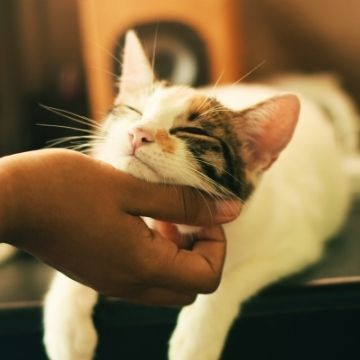How to Teach a Cat to Use the Litter Box?
It's perfectly natural for cats to use litter box. And for most kittens, learning to use litter box is also very easy.
You just have to prepare what you need to prepare, plan what you need to plan, and generally any kitten can learn.

Preparation before teaching
The location of cat litter box, cat litter and training should be decided in advance and discussed separately below.
Cat litter box:
There are so many different types of litter boxes on the market, electric, enclosed, odd-shaped, you name it.
When teaching your kitten to use a litter box, follow the basic principle of 'Simpler is better'.
Personally, I like the type: small, light, rectangular and open. It's the easiest type for a kitten to "pick up".
Cat litter:
Bentonite sand is the most common choice of most cat owners, it can absorb water and environmental protection.
But for training kittens, this type of litter is not personally recommended.
More environmentally friendly pine sand, tofu sand, is a better choice, as far as possible to choose no fragrance products.
Location:
Wherever you're gonna put it in the future, put it in the present. Plan an escape route and keep the location private.
Introduce your kitten to the litter box
For most kittens, using litter is "natural". You don't need to teach them. Just take it to the litter box and it will scratch in it.
So, as soon as the kitten gets home (as soon as it's old enough), start "training" it:
- As soon as you get home, put it in the litter box;
- Grab a handful of litter and let your cat touch it with its paws to get it interested in the litter first;
- Let the cat know where the litter box is, then leave it alone. Let it eat what it should eat, drink what it should drink;
- 15 to 20 minutes after eating and drinking, take it to the litter box;
- If the cat doesn’t urinate in the litter box, wait two or three hours and try again;
- Use the litter box with it every two hours. Repetition will speed up the teaching.

Limits on the range of activities
Limiting your cat's activity area will make teaching go faster before it have fully learned how to use the litter box.
If you let it wander, it may not find a "more comfortable" part of the house.
The following suggestions will enhance their training memory:
- Make sure the area where it is staying has a clean litter box and litter at all times;
- In the room where the litter box is placed, there is food and drink and a cat bed;
- Clean the dirty cat litter as often as possible.
As your cat gets more used to using the litter box, gradually let it roam more.
Restricted areas are, in some cases, effective in correcting cat litter accidents that are not caused by disease.
Tips to avoid retraining
Some cats may learn to use the litter box and then, for some unknown reason, suddenly stop using it. Here are some tips to minimize the chances of that happening:
- Do not place food and drink too tightly near the litter box. Many cats resent this;
- Clean the area where the cat urinates thoroughly with enzyme preparation;
- If you find your cat defecating somewhere else, take it to the litter box immediately and calmly tell him where the right place is;
- Considering the sterilization;
- Try different types of litter.
Most cats can do it on their own, but sometimes they need a little help from you. Cats are very clever and will always understand you if you treat them gently.




